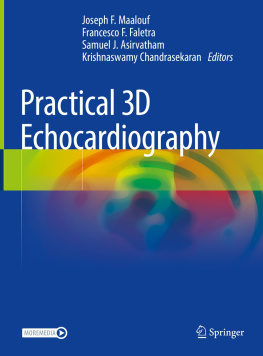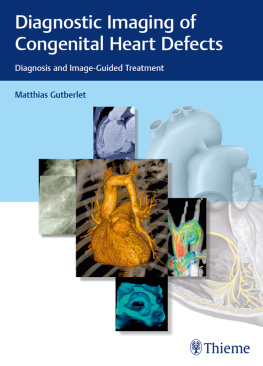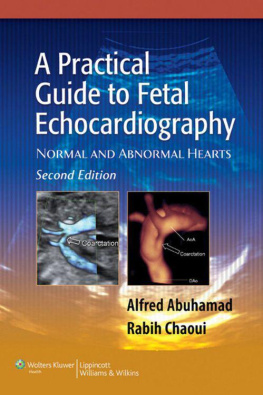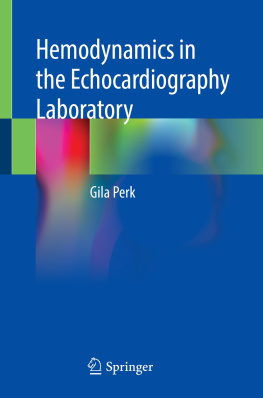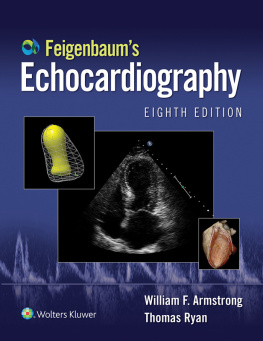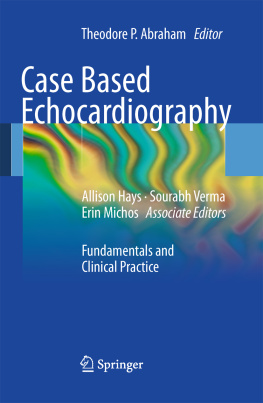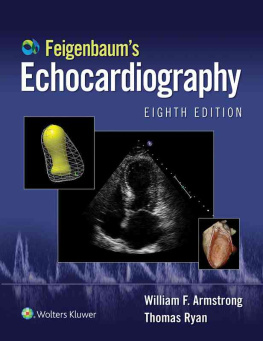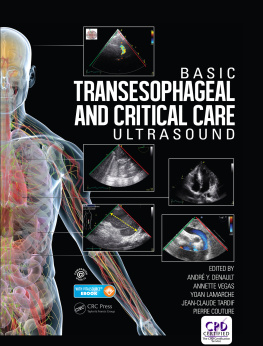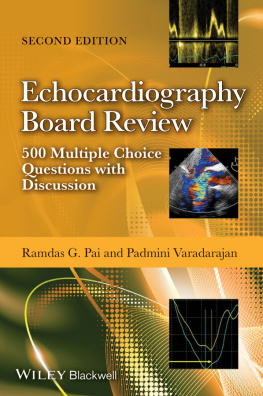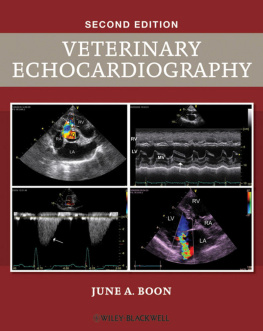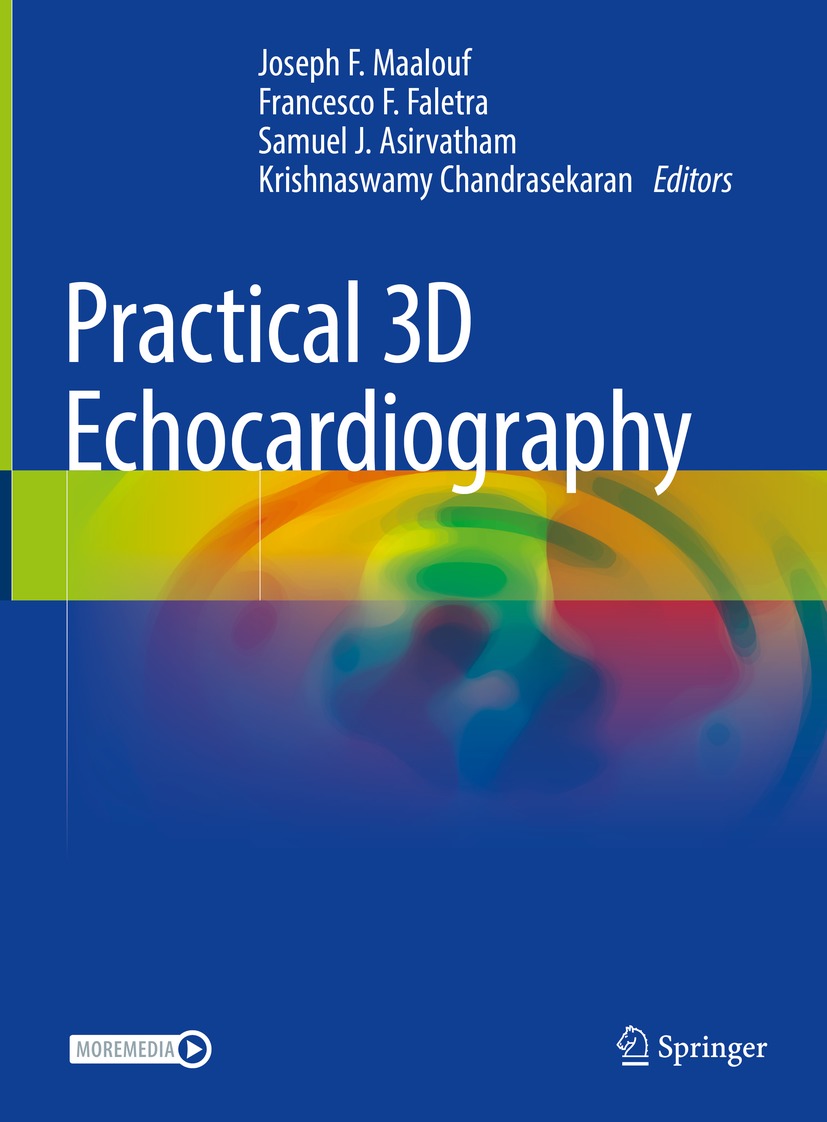Editors
Joseph F. Maalouf
Rochester, MN, USA
Francesco F. Faletra
Lugano, Switzerland
Samuel J. Asirvatham
Rochester, MN, USA
Krishnaswamy Chandrasekaran
Rochester, MN, USA
ISBN 978-3-030-72940-0 e-ISBN 978-3-030-72941-7
https://doi.org/10.1007/978-3-030-72941-7
Springer Nature Switzerland AG 2022
This work is subject to copyright. All rights are reserved by the Publisher, whether the whole or part of the material is concerned, specifically the rights of translation, reprinting, reuse of illustrations, recitation, broadcasting, reproduction on microfilms or in any other physical way, and transmission or information storage and retrieval, electronic adaptation, computer software, or by similar or dissimilar methodology now known or hereafter developed.
The use of general descriptive names, registered names, trademarks, service marks, etc. in this publication does not imply, even in the absence of a specific statement, that such names are exempt from the relevant protective laws and regulations and therefore free for general use.
The publisher, the authors and the editors are safe to assume that the advice and information in this book are believed to be true and accurate at the date of publication. Neither the publisher nor the authors or the editors give a warranty, expressed or implied, with respect to the material contained herein or for any errors or omissions that may have been made. The publisher remains neutral with regard to jurisdictional claims in published maps and institutional affiliations.
This Springer imprint is published by the registered company Springer Nature Switzerland AG
The registered company address is: Gewerbestrasse 11, 6330 Cham, Switzerland
Preface
The ultimate goal of any imaging modality is to present cardiac anatomy and pathology in a three-dimensional (3D) format that faithfully depicts the dynamic in vivo morphology fundamental to accurate diagnosis for optimal therapy. Over the past two decades, giant strides were made in the field of 3D echocardiography (3DE) due in large part to the tremendous advances in computer technology coupled to the miniaturization of electronic circuitry. This enabled the development of the fully sampled matrix array transducer, a milestone in the history of 3DE and currently the basis for all 3DE imaging platforms.
With 3DE, it is possible to obtain en face views of an entire region of interest from a single acoustic window with little probe manipulation. The images obtained can be viewed in multiple perspectives and are readily appreciated by non-imaging cardiologists and cardiac surgeons. As a result, 3DE has become essential for the diagnosis of a host of cardiac diseases including the entire spectrum of native and prosthetic mitral valve pathologies, aortic valve perforations, and atrial septal defects. Moreover, because catheters, devices, and wires are better seen in the 3D space than in the 2D space, 3DE, and mainly three-dimensional transesophageal echocardiography (3D TEE), has emerged as an indispensable tool to guide many catheter-based interventions with a particular emphasis on mitral interventions. A thorough appreciation of cardiac anatomy and pathology is a major prerequisite for 3D imaging. We, therefore, used a correlative approach to 3D imaging that incorporates anatomically correct spatial orientation of images in normal and disease states.
3DE is also increasingly assuming a quantitative role. By eliminating the need for speculative geometric assumptions, a major limitation of 2D echocardiography, three-dimensional transthoracic echocardiography (3D TTE) is currently being routinely used for the quantitation of left ventricular chamber volumes and function. Moreover, quantitative analysis of the 3D volumetric data set is assuming a greater role in the morphologic and physiologic assessments of stenotic and regurgitant lesions to guide surgical or catheter-based therapies; these include transcatheter mitral or tricuspid valve repair, and aortic and mitral valve-in-native or prosthetic valve implantation. Additionally, 3D TEE is used to guide percutaneous left atrial appendage occlusion in patients with atrial fibrillation. These added quantitative values of 3D are amplified by recent developments in fully automatic quantification algorithms and artificial intelligence, which make 3D quantification easy, fast, and reproducible.
This book, which draws on the extensive experience in 3DE at Mayo Clinic and Cardiocentro Ticino, is written in a practical user-friendly format to guide 3D imaging in daily practice and addresses the needs and concerns of both novice and experienced 3D echocardiographers by providing a best practice methodology to 3D imaging (what to look for, how to look for, optimal views, etc.) including caveats, pitfalls, and limitations. It is written in a highly instructive practical disease and problem-oriented approach that is supported by illustrative high-quality images (and supplemental video clips where applicable) and includes cases that demonstrate the incremental value of 3DE over 2D echocardiography. Additionally, a step-by-step approach to image acquisition and optimization is utilized and includes clinical pearls, pointers, and the navigation of complicated vendor-specific 3D knobology that has made even the most experienced echocardiographers weary of embracing this technology. For beginners in 3D echocardiography, we strongly urge you to start exploring the imaging capabilities of the matrix array transducer, and in the process to appreciate its immense value as a diagnostic tool. For all others, we hope that the information provided in this book will be useful in your daily practice.
Joseph F. Maalouf
Francesco F. Faletra
Samuel J. Asirvatham
Krishnaswamy Chandrasekaran
Rochester, MN Lugano, Switzerland Rochester, MN Rochester, MN

